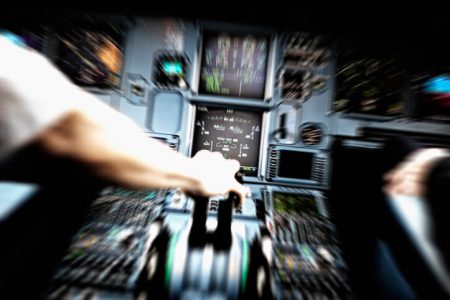Pilot training that involves physical training
Physical strength is rarely an issue in pilot training these days. Because of hydraulics and fly-by-wire systems, modern aircraft can often be flown using just your fingertips, but it hasn’t always been that way. In fact, I can remember being a guinea pig in my airline training class because I was the first woman to train in the Fokker 100.
I was the first woman to train in the Fokker 100 and there was talk among the instructors that a woman would not be strong enough to fly the plane in manual reversion so they all crowded into my simulator to laugh at me. Well, maybe it wasn’t quite that bad (I actually got the last laugh when I greased the landing after a total hydraulic failure), but just between you and me, I was sweating bullets and had to use every ounce of my strength to make it look like it was just another landing.
But I just read something about the Boeing Max recertification that made me rethink everything about the necessity for physical strength in pilots. A potential solution for the Boeing 737 Max has the industry concerned that “turning the manual crank” during the MCAS emergency procedure may be too difficult for some pilots.
Turning the crank moves a horizontal panel on the tail, which can help change the angle of the nose. But under certain conditions, including unusually high speeds with the panel already at a steep angle, it can take a lot of force to move the crank. Unfortunately for Boeing, the same emergency procedure applies to the generation of 737’s that preceded the Max – the 737NG. With approximately 6300 of these planes currently in service, there is now a reassessment of some of the basic safety assumptions for the Boeing 737 model.
There are no immediate plans to restrict certain pilots from flying these planes, but I can guarantee they are taking a good, hard look at the strength required to maneuver the aircraft under the most extreme conditions. Adrenaline can give a pilot super strength in an emergency situation, but there are no guarantees.
I’m not recommending that the ability to “bench press” a certain amount of weight be required to pass a 737 checkride, but I am all in favor of knowing exactly what will be required of all pilots before recertifying the Max and NG models. If the “Fix” that Boeing submits to the FAA is going to require every ounce of strength a pilot can muster, then I think they may need to go back to the drawing board and come up with a more suitable option.
RELATED CTS TRAINING










